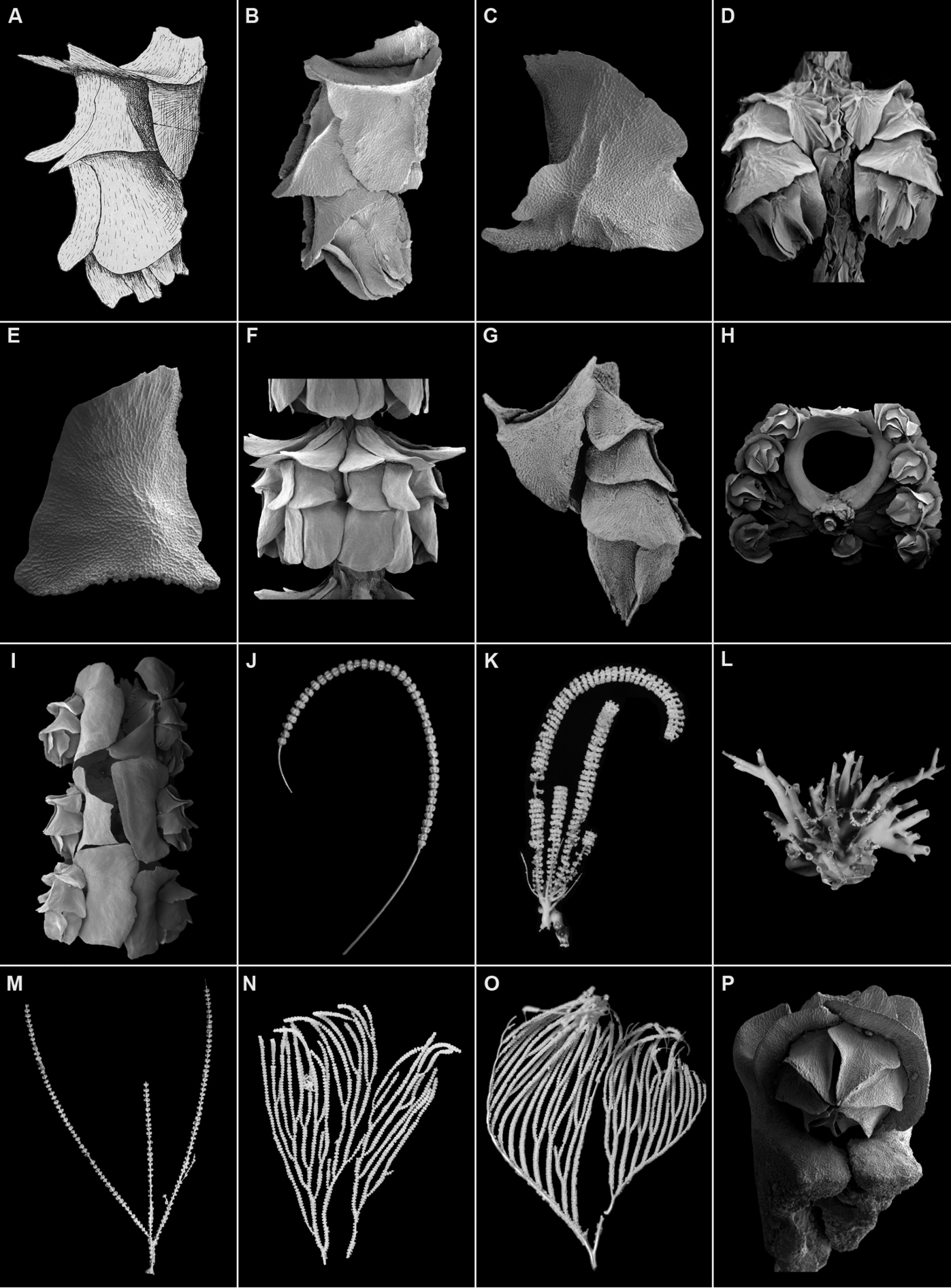
|
||
|
A, B lateral view of a polyp showing dorsolateral ridge for entire height of basal scale (A N. parva from Versluys (1906)B N. bayeri) C basal scale of N. hawaiinensis showing dorsolateral ridge only on lower half of scale D whorl of polyps of N. pauciflora showing multiple dorsolateral ridges on the basal scales E basal scale of N. vulgaris showing the lack of a dorsolateral ridge, and a lobate distal edge F polyp whorl of N. bellissima showing the three pairs of body wall scales G polyp of N. laxa having four pairs of body wall scales H polyp whorl of N. hypsocalyx showing highly modified basal scales forming a cross section view of a cylindrical worm tube I polyp whorl of N. vulgaris showing highly modified basal scales forming a lateral view of a cylindrical worm tube J unbranched colony of N. versluysi K, L branching from a basal bolus of N. hypsocalyx M sparse, dichotomous branching of N. macrocalyx N equal, dichotomous branching of N. vulgaris O lyrate branching of N. bellissima P massive basal scales of N. clavata. |